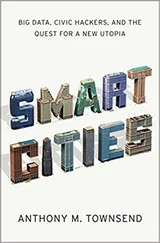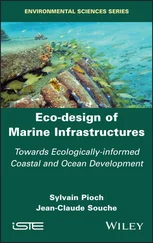Cyberphysical Smart Cities Infrastructures
Здесь есть возможность читать онлайн «Cyberphysical Smart Cities Infrastructures» — ознакомительный отрывок электронной книги совершенно бесплатно, а после прочтения отрывка купить полную версию. В некоторых случаях можно слушать аудио, скачать через торрент в формате fb2 и присутствует краткое содержание. Жанр: unrecognised, на английском языке. Описание произведения, (предисловие) а так же отзывы посетителей доступны на портале библиотеки ЛибКат.
- Название:Cyberphysical Smart Cities Infrastructures
- Автор:
- Жанр:
- Год:неизвестен
- ISBN:нет данных
- Рейтинг книги:4 / 5. Голосов: 1
-
Избранное:Добавить в избранное
- Отзывы:
-
Ваша оценка:
- 80
- 1
- 2
- 3
- 4
- 5
Cyberphysical Smart Cities Infrastructures: краткое содержание, описание и аннотация
Предлагаем к чтению аннотацию, описание, краткое содержание или предисловие (зависит от того, что написал сам автор книги «Cyberphysical Smart Cities Infrastructures»). Если вы не нашли необходимую информацию о книге — напишите в комментариях, мы постараемся отыскать её.
Cyberphysical Smart Cities Infrastructures: Optimal Operation and Intelligent Decision Making,
Cyberphysical Smart Cities Infrastructures
Cyberphysical Smart Cities Infrastructures — читать онлайн ознакомительный отрывок
Ниже представлен текст книги, разбитый по страницам. Система сохранения места последней прочитанной страницы, позволяет с удобством читать онлайн бесплатно книгу «Cyberphysical Smart Cities Infrastructures», без необходимости каждый раз заново искать на чём Вы остановились. Поставьте закладку, и сможете в любой момент перейти на страницу, на которой закончили чтение.
Интервал:
Закладка:
More recently, a new line of work has been introduced to take advantage of this connection. AbbtextVisual question answering (VQA) [17] is the task of receiving an image along with a natural language question about that image as an input and attempting to find the accurate natural language answer for it as the output. The beauty of this task is that both the questions and the answers can be open‐ended and also the questions can target different aspects of the image such as the objects that are present in them, their relationship or relative positions, colors, and background.
Following this research, Singh et al. [36] cleverly added an optical character recognition (OCR) module to the VQA model to enable the agent to read the texts available in the image as well and answer questions asked from them or use the additional context indirectly to answer the question better.
One may ask where the new task stands relative to the previous one. Do agents who can answer questions more intelligent than the ones who deal with captions or not? The answer is yes. In [17], the authors show that VQA agents need a deeper and more detailed understanding of the image and reasoning than models for captioning.
3.3.3 Embodied Visual Recognition
Passive or fixed agents may fail to recognize objects in scenes if they are partially or heavily occluded. Embodiment comes to the rescue here and gifts the possibility of moving in the environment to actively control the viewing position and angle to remove any ambiguity in object shapes and semantics.
Jayaraman and Grauman [37] started to learn representations that will exploit the link between how the agent moves and how it will affect its visual surrounding. To do this they used raw unlabeled videos along with an external GPS sensor that provided the agent's coordinates and trained their model to learn a representation linking these two. So, after this, the agent would have the ability to predict the outcome of its future actions and guess how the scene would look like after moving forward or turning to a side.
This was powerful and in a sense, the agent developed imagination. However, there was an issue here. If we pay attention, we realize that the agent is still being fed prerecorded video as the input and is learning similar to the observer kitten in the kitten carousel experiment explained above. So, following this, the authors went after this problem and proposed to train an agent that takes any given object from an arbitrary angle and then predict or better to say imagine the other views by finding the representation in a self‐supervised manner [38].
Up until this point, the agent does not use the sound of its surroundings while humans are all about experiencing the world in a multisensory manner. We can see, hear, smell, and touch all at the same time and extract and use the relevant information that could be beneficial to our task at hand. All that said, understanding and learning the sound of objects present in a scene is not easy since all the sounds are overlapped and are being received via a single channel sensor. This is often dealt with as an audio source separation problem, and lots of work has been done on it in the literature [39, 43].
Now it was the reinforcement learning's turn to make a difference. Policies have to be learned to help agents move around a scene, and this is the task of active recognition [44, 48]). The policy will be learned at the same time it is learning other tasks and representation, and it will tell the agent where and how to strategically move to recognize things faster [49, 50].
Results show that policies indeed help the agent to achieve better visual recognition performance, and the agents can strategize their future moves and path for better results that are mostly different from shortest paths [51].
3.3.4 Embodied Question Answering
Embodied Question Answering brings QA into the embodied world. The task starts by an agent being spawned at a random location in a 3D environment and asked a question in which its answer can be found somewhere in the environment. For the agent to answer it, it must first strategically navigate to explore the environment, gather necessary data via its vision, and then answer the question when the agent finds it [52, 53].
Following this, Das et al. [54] also presented a modular approach to further enhance this process by teaching the agent to break the master policy into subgoals that are also interpretable by humans and execute them to answer the question. This proved to increase the success rate.
3.3.5 Interactive Question Answering
Interactive Question Answering (IQA) is closely related to the Embodied version of it. The only main issue is that question is designed in a way that the agent must interact with the environment to find the answer. For example, it has to open the refrigerator or pick up something from the cabinet and then plan for a series of actions conditioned on the question [55].
3.3.6 Multi‐agent Systems
Multi‐agent systems (MAS) is another interesting line of development. The default standpoint of AI has a strong focus on individual agents. MAS research that has its origins in the field of biology tries to change this and studies the emergence of behaviors in groups of agents or swarms instead [56, 57].
Every agent has a set of abilities and is good in them to an extent. The point of interest in MAS is how a sophisticated global behavior can emerge from a population of agents working together. A real‐life example of such behavior can be found in insects like ants and bees [58, 59]. One of the interesting goals of this research is to ultimately make agents that could self‐repair [60, 61].
The emerging behavior of MAS can be tailored by researchers to let the group of agents tackle various tasks such as rescue missions, traffic control, fun sports events, surveillance, and many more. Additionally, when fused with other fields, unexpected outcomes can occur. Take “Talking Heads” experiment by Luc Steels [62, 63] as an example showing a common vocabulary emerging through the interaction of agents with each other and their environment via a language game.
3.4 Simulators
Now that we know about the fields and tasks that embodied AI can shine in, the question is how our agents should be trained. One may say it is good to directly train in the physical world and expose them to its richness. Although a valid solution, this choice comes with a few drawbacks. First, the training process in the real world is slow, and the process cannot be sped up or parallelized. Second, it is very hard to control the environment and create custom scenarios. Third, it is expensive, both in terms of power and time. Fourth, it is not safe, and improperly trained or not fully trained robots can hurt themselves, humans, animals, and other assets. Fifth, for the agent to generalize the training, it has to be done in plenty of different environments that is not feasible in this case.
Our next choice is simulators, which can successfully deal with all the aforementioned problems pretty well. In the shift from Internet AI to embodied AI, simulators take the role that was previously played by traditional datasets. Additionally, one more advantage of using simulators is that the physics in the environment can be tweaked as well. For instance, some traditional approaches in this field [64] are sensitive to noise, and for the remedy, the noise in the sensors can be turned off for the purpose of this task.
As a result, agents nowadays are often developed and benchmarked in simulators [65, 66], and once a promising model has been trained and tested, it can then be transferred to the physical world [67, 68].
Читать дальшеИнтервал:
Закладка:
Похожие книги на «Cyberphysical Smart Cities Infrastructures»
Представляем Вашему вниманию похожие книги на «Cyberphysical Smart Cities Infrastructures» списком для выбора. Мы отобрали схожую по названию и смыслу литературу в надежде предоставить читателям больше вариантов отыскать новые, интересные, ещё непрочитанные произведения.
Обсуждение, отзывы о книге «Cyberphysical Smart Cities Infrastructures» и просто собственные мнения читателей. Оставьте ваши комментарии, напишите, что Вы думаете о произведении, его смысле или главных героях. Укажите что конкретно понравилось, а что нет, и почему Вы так считаете.

![Чарльз Диккенс - A Tale of Two Cities [С англо-русским словарем]](/books/26616/charlz-dikkens-a-tale-of-two-cities-s-anglo-thumb.webp)










